[Shanghai, China, June 12, 2025] Huawei Digital Power held the Grid Forming & Energy Storage System (ESS) Safety Forum in Shanghai, inviting customers, partners, insurance companies, and certification organizations from the PV and ESS industry to discuss and share insights on the development trends and applications of grid-forming technology, business practices, and ESS safety ecosystem construction. The forum provided new ideas for promoting grid-forming technology worldwide and further enhancing ESS safety, thereby accelerating the development of new power systems. At the forum, Huawei Digital Power, along with customers, partners, insurance companies, and certification organizations, launched the ESS Safety Initiative to elevate ESS safety to new heights.
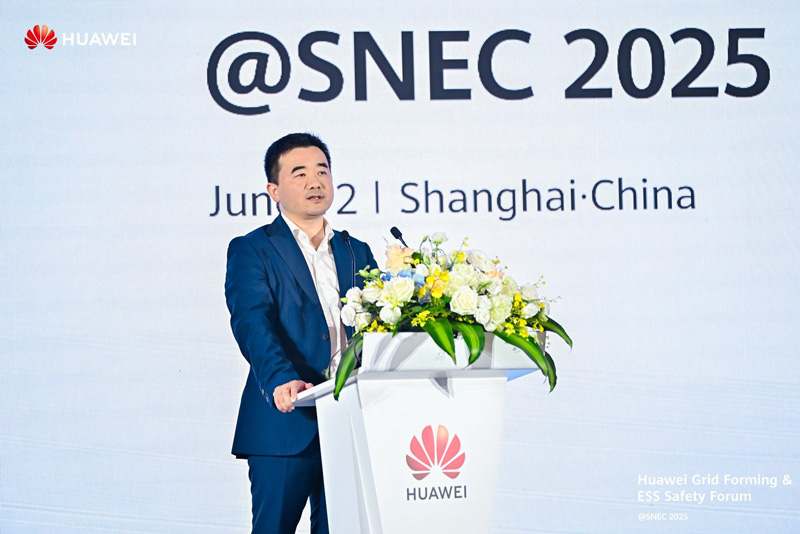 Steven Zhou, President of Smart PV & ESS Product Line, Huawei Digital Power
Steven Zhou, President of Smart PV & ESS Product Line, Huawei Digital Power
Steven Zhou, President of the Smart PV & ESS Product Line at Huawei Digital Power, delivered the opening speech. He stated that with the advancement of the global energy transition, the ESS is playing a crucial role in supporting the large-scale integration of renewable energy into the grid and ensuring stable grid operations, presenting both unprecedented opportunities and challenges. A grid-forming ESS, with its excellent grid-supporting capability, has become a cutting-edge and popular technology. Moreover, ESS safety is the top priority for the sustainable development of the industry. Huawei Digital Power has just launched the brand-new FusionSolar 9.0 Smart PV+ESS solution, promoting grid-forming technology from ESS to PV+ESS and across all scenarios, thereby achieving comprehensive applications.
Adhering to high safety standards is key to maintaining grid stability. Huawei Digital Power proposes four safety standards: non-flammable, non-explosive, non-spreading, and non-harmful. The cell-to-grid safety design improves system reliability. Huawei will continue to innovate and collaborate with customers, partners, and industry organizations to promote the adoption of safety standards and drive business model innovation, ensuring that all parties in the industry chain can benefit from technological advancements and achieve a sustainable future.
Grid-Forming Business Strategies: Promoting Active Safety and Accelerating the Construction of New Power Systems
Robert Liew, APAC Research Director at Wood Mackenzie, delivered a speech on how grid-forming technology can support US$5 trillion in renewable energy investments. He estimated that from 2025 to 2034, the market needs US$1.1 trillion in battery energy storage system (BESS) investment to support the development of 5,914 GW of new wind and solar power installations. By 2034, global electricity demand is expected to increase by 55%, and variable renewable energy (VRE) is projected to account for more than 80% of power generation. If the BESS capacity is insufficient, integrating electricity generated from renewable energy into the existing grids may cause grid instability.
 Robert Liew, APAC Research Director, Wood Mackenzie
Robert Liew, APAC Research Director, Wood Mackenzie
Wood Mackenzie believes that grid-forming BESSs will effectively increase grid stability, including acting as a voltage source, supporting high current transient states, providing inertia, enabling wideband oscillation damping, and offering a self-start function, which traditional grid-following BESSs cannot achieve. This is crucial to future grids. The world's largest 1.3 GWh grid-forming PV+ESS project at The Red Sea destination has been running 24/7 for nearly two years. This real-world application demonstrates the stability of grid-forming BESSs powered by 100% renewable energy.
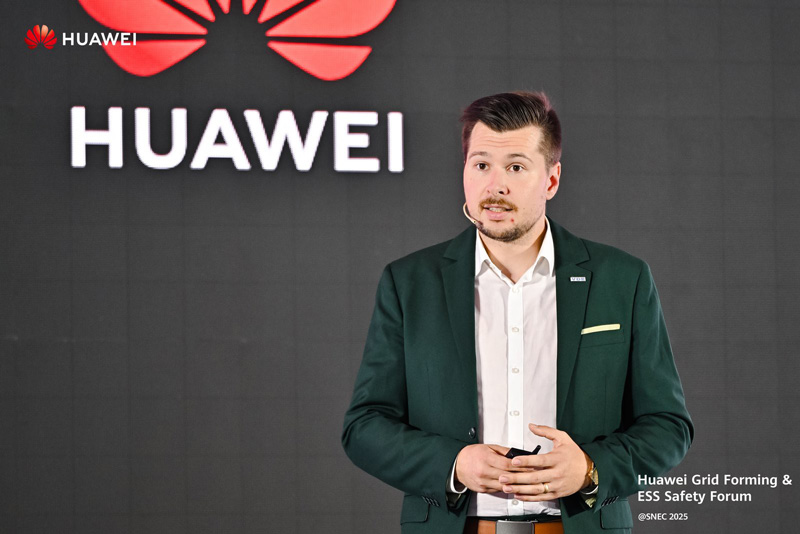 Patrick Zank, Business Development Manager, VDE
Patrick Zank, Business Development Manager, VDE
Patrick Zank, Business Development Manager at VDE, shared the progress of grid-forming technology standardization and marketization in Germany. He stated that grid-forming technology is crucial for future electricity development, and unified standards and market trust are essential to promoting its large-scale applications. The Network Technology/Network Operation Forum at VDE (VDE FNN) and the European Network of Transmission System Operators for Electricity (ENTSO-E) are collaborating on unified grid-forming inverter performance standards to mitigate project risks. In addition, the system's resilience is ensured through the combination of multiple technologies, including synchronous condensers, advanced inverters, and hybrid power plants.
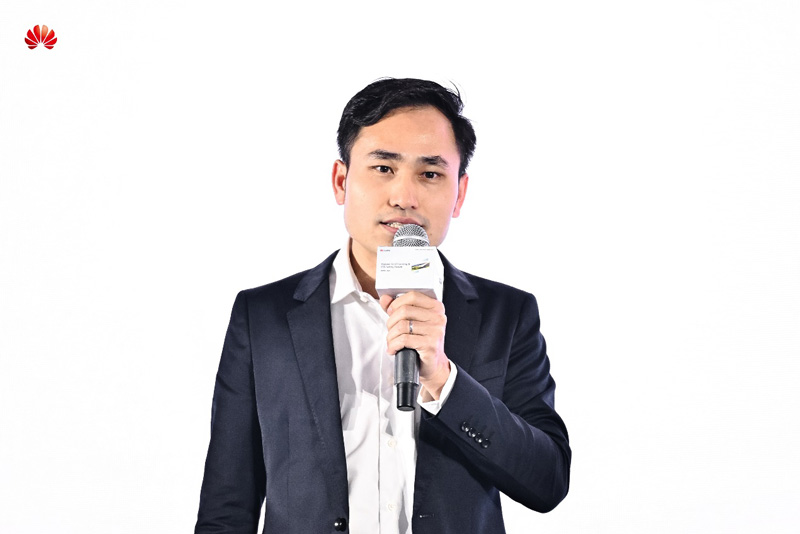 Vannsith Ith, Director, Power Management Division, SchneiTec
Vannsith Ith, Director, Power Management Division, SchneiTec
Vannsith Ith, Director of the Power Management Division at SchneiTec, shared details about the first utility-scale ESS project in Cambodia. This project implements Huawei's Smart String Grid-Forming ESS, which has successfully passed 13 grid-forming performance tests and 6 plant performance tests, demonstrating its stable grid-supporting capabilities in off-grid and weak grid scenarios. This is the first grid-forming ESS project in Cambodia and the first large-scale ESS project worldwide to obtain grid-forming capability certification from TÜV SÜD. It paves the way for future capacity expansion and the construction of large-scale energy infrastructure. With the steady progress of the clean energy plan in Cambodia, Huawei Digital Power will continue to lead energy innovation, providing flexible, scalable, stable, and reliable solutions to meet the country's growing demand for sustainable power and contribute to the development of local energy infrastructure.
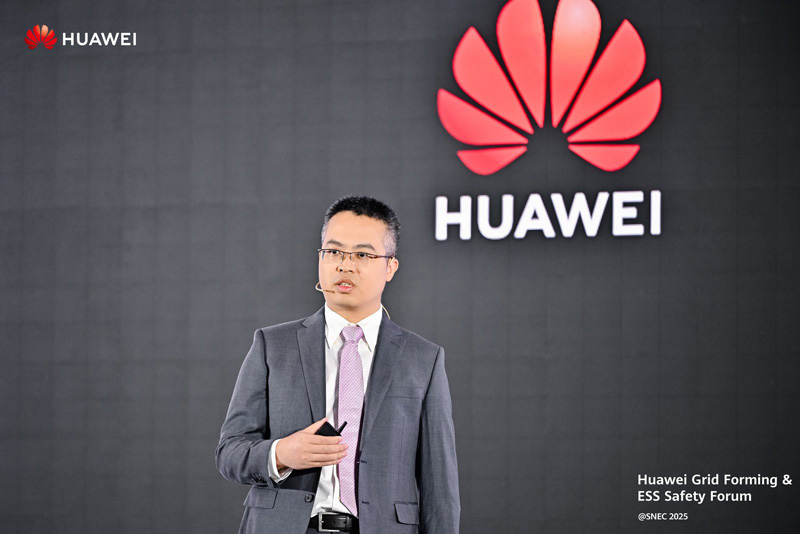 Billy Qiu, Technical Manager, Smart Energy, TÜV SÜD
Billy Qiu, Technical Manager, Smart Energy, TÜV SÜD
Billy Qiu, Technical Manager of Smart Energy at TÜV SÜD, shared a success story of establishing grid-forming technology standards based on the theme of grid-forming technology standardization and the PV+ESS project in Cambodia. Based on its extensive experience in the renewable energy and power grid fields, TÜV SÜD has developed the grid-forming technology standard PPP 58232. This standard will analyze the actual capabilities of renewable energy power generation and ESS capabilities in actively supporting grid stability through empirical tests, providing a reliable engineering solution for standardizing grid-forming technologies.
 Utility-scale ESS winning the world's first grid-forming capability certificate of TÜV SÜD
Utility-scale ESS winning the world's first grid-forming capability certificate of TÜV SÜD
The standard has been tested in specific projects. At the beginning of 2025, TÜV SÜD conducted an empirical test on the grid-forming capability of Huawei's grid-forming PV+ESS system in Cambodia, in accordance with PPP 58232, based on the local grid conditions and power company requirements. The system's key functions can meet the specifications and parameters corresponding to advanced grid technologies in international and European markets. The test results provide a solid foundation for building a stable and reliable smart grid, demonstrating the development of grid-forming projects in Southeast Asia.
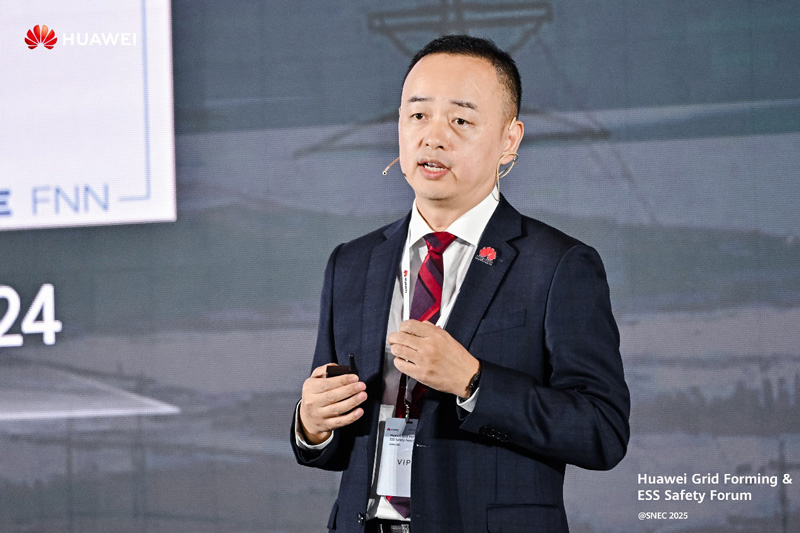 Chen Danqing, CTO of Grid-Forming ESS Business, Huawei Digital Power
Chen Danqing, CTO of Grid-Forming ESS Business, Huawei Digital Power
Chen Danqing, CTO of the Grid-Forming ESS Business at Huawei Digital Power, delivered a keynote speech on Huawei's grid-forming innovation and business practices. He stated that there are four major technical challenges to the large-scale commercial use of grid-forming technology, including multi-device parallel operation stability, wideband oscillation damping, strong overload support, and device safety and reliability.
With extensive experience in the PV and ESS fields, particularly in grid-friendly and grid-forming technologies, Huawei Digital Power proposes the Smart String Grid-Forming ESS technology system. The technology system encompasses grid-forming capabilities across the entire power generation, transmission, distribution, and consumption process, redefining the core standards of grid-forming capabilities. Specifically, grid-forming ESS should possess grid-forming capabilities for all performance levels, under all grid conditions, and throughout the full lifecycle. It can provide deterministic and stable support for power systems, meeting the requirements of various business models in the future. Huawei's Smart String Grid-Forming ESS has undergone rigorous empirical tests in projects in Qinghai and Xizang, and has been successfully applied in GW-level projects.
ESS Safety Ecosystem: Strengthening Safety to Sustain Industry Growth
ESS safety has become a popular topic in the industry. Ensuring ESS safety while meeting market requirements is a challenge that the entire industry must address.
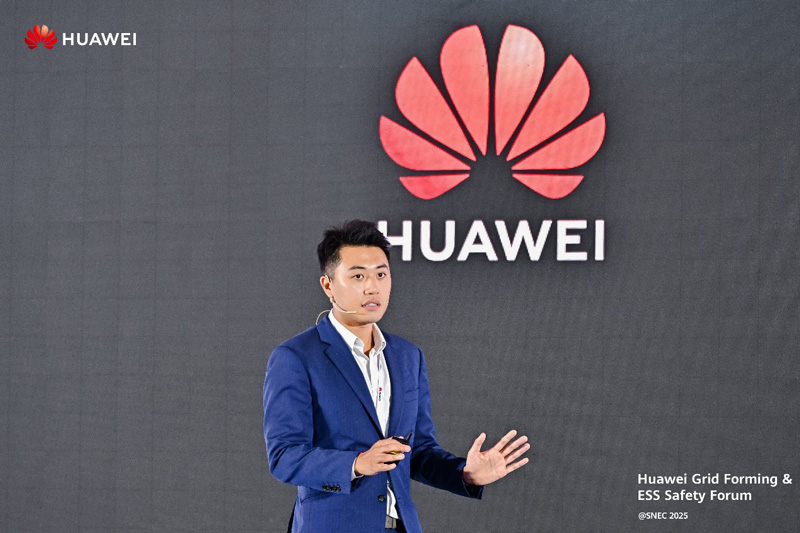 Chen Weipeng, Regional Business President (Non-Life Insurance) of Munich Re Group
Chen Weipeng, Regional Business President (Non-Life Insurance) of Munich Re Group
Chen Weipeng, Regional Business President (Non-Life Insurance) of Munich Re Group, shared his insights on the theme of safeguarding ESS projects. Munich Re Group has over 140 years of experience in assessing insurance risks. As the world's first insurance company to offer long-term warranty insurance solutions for ESS plants, Munich Re Group has provided insurance solutions for over 900 PV or ESS projects in more than 90 countries across the renewable energy industry. Munich Re Group can provide property all-risk insurance, performance insurance, engineering insurance during the construction period, and marine cargo insurance during the transportation period to help customers avoid risks and losses, thereby safeguarding the safe operation of ESS plants throughout their lifecycle.
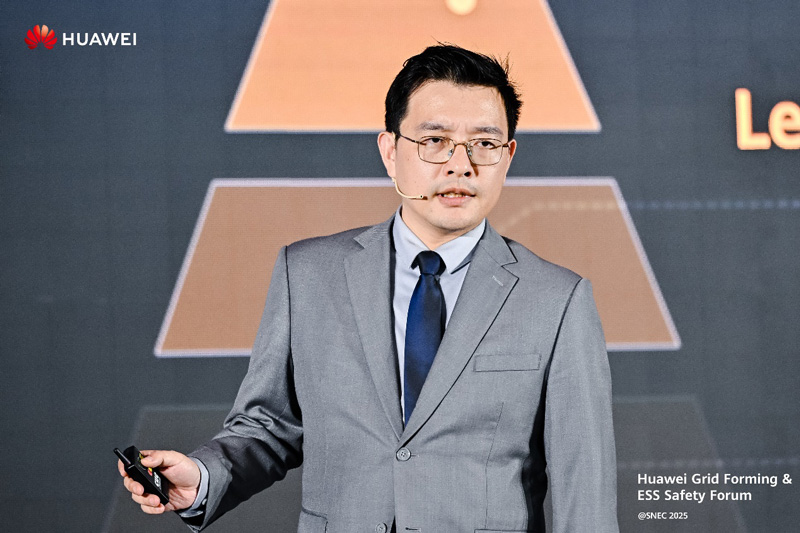 Chen Xiong, General Manager of Electric Power and Electronic Products Service, TÜV Rheinland China
Chen Xiong, General Manager of Electric Power and Electronic Products Service, TÜV Rheinland China
In the keynote speech on ESS safety standards and vision, Chen Xiong, General Manager of Electric Power and Electronic Products Service, TÜV Rheinland China, elaborated on ESS safety standards. He pointed out that true system safety should encompass the entire lifecycle of the ESS, covering the entire process from design to production, transportation, and installation, to achieve end-to-end systematic safety assurance. Only by promoting the establishment of unified standards, requiring the highest standards for safety accident prevention, and always adhering to rigor and caution in safety design can we effectively ensure the healthy and sustainable development of the industry.
During the continuous improvement of ESS safety standards, Huawei's Smart String Grid-Forming ESS has become the industry's first product to pass TÜV Rheinland's highest safety certification. The product performed outstandingly in the extreme burning test. It not only passed the highest-level Safety Prime test, but also exceeded some key indicators of TÜV Rheinland's existing standards. The test results further converted safety verifications into industry-standard recommendations, providing strong support for the high-quality and healthy development of the ESS industry.
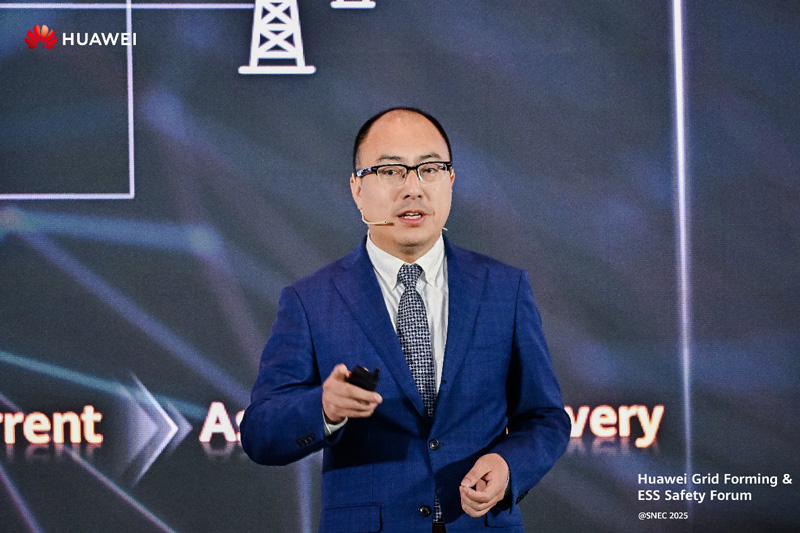 Steve Zheng, President of Grid-Forming ESS Business, Huawei Digital Power
Steve Zheng, President of Grid-Forming ESS Business, Huawei Digital Power
Steve Zheng, President of Grid-Forming ESS Business, Huawei Digital Power, delivered a keynote speech on guarding the future of energy, building a safety foundation, and advancing ESS safety to new heights." He pointed out that ESSs have three typical characteristics: high density, high voltage, and high current. During the lifecycle, the electrochemical inconsistency, grid uncertainty, and insufficient digital management capabilities of ESSs may cause great safety risks.
To address these issues, Huawei Digital Power launches an innovative safety system that integrates the "Panshi" battery pack, two-stage string architecture, and smart health diagnosis to ensure the ESS's safety throughout its lifecycle.
The battery pack is designed as the minimum safety unit. Based on the mechanism of battery thermal runaway, it employs three-level insulation to prevent arcs, thermal propagation, and fire.
This architecture effectively blocks current backfeed, maintains stable active power during high- and low-voltage ride-through, and enables rapid power grid recovery.
The advanced digital management platform enhances visibility and control of safety. With smart cell-to-grid safety protection, it delivers fault warnings up to seven days in advance, identifies over 30 fault types, and provides uninterrupted real-time status monitoring.
Together with the international authoritative organization DNV, Huawei Digital Power successfully conducted an extreme ignition test on the Smart String Grid-Forming ESS, fully verifying its safety protection capability in extreme ignition scenarios. Additionally, during the forum, the nail penetration, water immersion, and thermal runaway tests were demonstrated at the Huawei Dongguan Grid-Forming ESS Comprehensive Lab. The test results effectively verified the safety performance of the system under the four safety standards of non-flammable, non-explosive, non-spreading, and non-harmful, as well as the three basic safety standards of grid-friendly, load-friendly, and environment-friendly. Huawei Digital Power will continue to provide PV+ESS solutions with high quality and safety throughout the lifecycle, and work with the industry chain to achieve a sustainable and green future.
 ESS safety initiative ceremony
ESS safety initiative ceremony
At the end of the forum, Huawei Digital Power, along with customers, partners, and organizations, launched the ESS Safety Initiative. The initiative aims to improve the ESS-dedicated fire suppression specifications, promote the global promotion and continuous iteration of ESS safety levels, establish ESS safety capabilities that can be visualized and managed throughout the lifecycle, and establish an ESS project risk assessment system throughout the process, thereby safeguarding the future of energy, building a safety foundation, and advancing ESS safety to new heights together.

 Search
Search




 Search
Search


